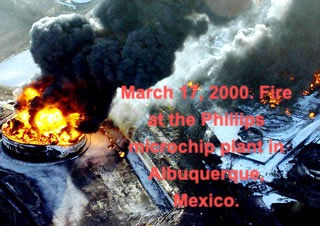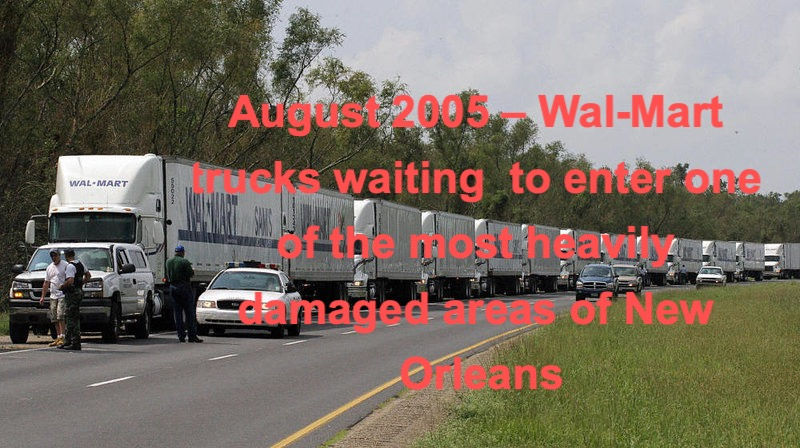The Future Is Not What It Used To Be - Part 1
- Rob Aston
- Jun 17, 2020
- 5 min read
Updated: Jul 30, 2020

After the Covid-19 crisis dissipates, we will see businesses fall into one of two categories: those that don’t do enough, hoping such a disruption won’t ever happen again and that they will get back to business as usual, and those that heed the lessons of this crisis, understand the need to change and make the necessary investments in order to prepare their supply chains to meet future challenges. The companies that take the latter approach will be the winners in the long term.
'Business as usual’ is not a phrase that is currently valid.
While the challenges due to the coronavirus may vary by sector, most businesses are in crisis management mode and likely to remain so for some time. As businesses struggle to deal with disruptions for customers and suppliers, and devise new ways of working, the crisis may morph into a wave of ongoing crises. Even after the threat of Coronavirus goes away, businesses will continue to face the challenge of a broken supply chain and major demand changes. The future will be very different from what we expected just a few months ago. Is this crisis an opportunity to transform our businesses and prepare them to thrive? Whilst there has not been aglobal crisis on this scale since WWII; Are there any lessons to be learnt from the winners and losers from previous events that can helps us to survive this crisis and be prepared for the next one?
Case example - Nokia vs Ericsson
When faced with a supply chain disruption, proactive and reactive supply chain risk management can make or break a company’s existence. One of the most famous, or rather infamous, cases was the fire at the Philips microchip plant in Albuquerque, New Mexico, in 2000, which supplied chips to both Ericsson and Nokia. Each company took a very different approach toward the incident, and in hindsight, clearly displayed how to and how not to handle supply chain disruptions. Nokia acted swiftly and moved to tie up spare capacity at other Philips plants and every other supplier they could find. They even re-engineered some of their phones so they could take chips from other Japanese and American suppliers.

Ericsson, having underestimated the problem, failed to act swiftly. When they realised their mistake, it was too late: since Ericsson had a single source policy for key components, they had no other supplier. Nokia had already taken it all. Essentially Nokia's heightened awareness allowed it to identify the severity of the disruption faster, leading it to take timely actions and lock up the resources for recovery. Single sourcing may have its benefits, but it has its costs, too. In an emergency, it is critical to be prepared to be able to act quickly.
Case example – Wal-Mart, hurricane Katrina
Following hurricane Katrina on August 29, 2005. In the New Orleans area, the resulting floods left approximately 80 percent of the city under water, in some places under as much as eight or ten feet of water. By Wednesday, August 24, five days before Katrina’s eventual landfall on the Gulf Coast, Wal-Mart’s emergency command centre had gone into action. The easily expandable structure of Wal-Mart’s emergency response procedures drives the ability to be agile and flexible. They moved emergency supplies such as generators, dry ice, and bottled water from their current warehouse locations to designated staging areas. Wal-Mart arrived in the New Orleans area long before the Federal Emergency Management Agency (FEMA) and had the supplies the community needed. In the three weeks following the storm’s landfall, Wal-Mart shipped almost twenty-five hundred truckloads of merchandise to the affected areas.
Wal-Mart CEO Lee Scott sent a message directly to his senior staff and told them to pass it

down to regional, district, and store managers: “A lot of you are going to have to make decisions above your level. Make the best decision that you can with the information that’s available to you at the time, and, above all, do the right thing”. Drivers and trucks were put in place to ship relief supplies to community members and charities.
Wal-Mart succeeded where FEMA failed by having heightened intelligence of the impending crisis, detailed procedures embedded into their core systems and organisation for a wide range of crisis scenarios and contracts, with inventory in place to respond.
Business Continuity and Risk Management
Following the 2008 financial crisis, most businesses engaged in preparing Business Continuity plans. Risk assessments were conducted and mitigating actions identified. As a result of this, many businesses were confident in their ability to mobilise rapidly and set up crisis-management mechanisms. Their focus was typically short term and reactionary,
evaluating critical part supply, available inventories, immediate customer demand, production capacity, and managing working capital and cash. However, although businesses conducted

risk assessments and identified mitigating actions, these are often not translated into detailed procedures and embedded into the business’s processes and systems. Furthermore, the risks assessed were usually ‘local’ in nature; ‘global’ crises were discounted as being ‘too pessimistic’.
Daniel Kahneman, in his bestselling book “Thinking Fast and Slow”, writes of a "pervasive optimistic bias". This bias generates the illusion of control. It is often this mindset that restricts the scope of a much more robust and comprehensive risk assessment.
What can we learn from these examples of crisis management?
In times of crisis, difficult decisions and choices will need to be made rapidly.
Leaders must create a more resilient and agile organisation for the future.
Strategic planning and risk assessments to be based on a wider range of scenarios andinclude more emphasis on global crises and health and safety.
Business Continuity has to be at the top of the agenda, not just a “ticking in the box exercise”.
Risk management must be thorough, looking beyond the financial risks and the short-term horizon.
The resilience of the supply chain must be assessed thoroughly, and risk-impact estimates and remediation strategies continually updated.
Processes and tools created during the crisis-management period should be embedded in the organisation, to monitor for early warning signs and act accordingly.
Risk mitigation activities should be embedded into the business’ core processes, systems and organisation (roles and responsibilities)
Businesses have to communicate and engage with all the stakeholders
Business Continuity and Emergency plans must be communicated to all managers within the organisation, as well as to customers and suppliers
Businesses have to communicate across multiple channels to keep their message clear and relevant, so their customers and suppliers know what to expect when they interact with them.
Organisations should add a list of critical supplier contacts to their emergency plans and put some key responders onto retainer contracts
Suppliers will be making decisions on whether to supply your company or other customers as their capacity reduces. Constant communication to the supply base must be maintained
During a crisis like Covid19, every individual within a company is impacted by risk mitigation measurements like social distancing and self-isolation; they will have to adapt to new working patterns and assume new responsibilities. The message from the leadership should provide certainty and give clarity, making sure that they understand what is expected from them.
Article by Rob Aston, Principle Consultant at ConsultAvila. At ConsultAvila we are a team of experienced professionals who work closely with our clients to solve complex business problems. We have a track record of delivering SUSTAINABLECHANGE at pace in manufacturing companies. Our principal offerings are: Business and Operations strategy - from design to delivery; Business turnaround and programme recovery; End to end supply chain restructuring and cost reduction; and, Integrated business planning and inventory optimisation.




Comments